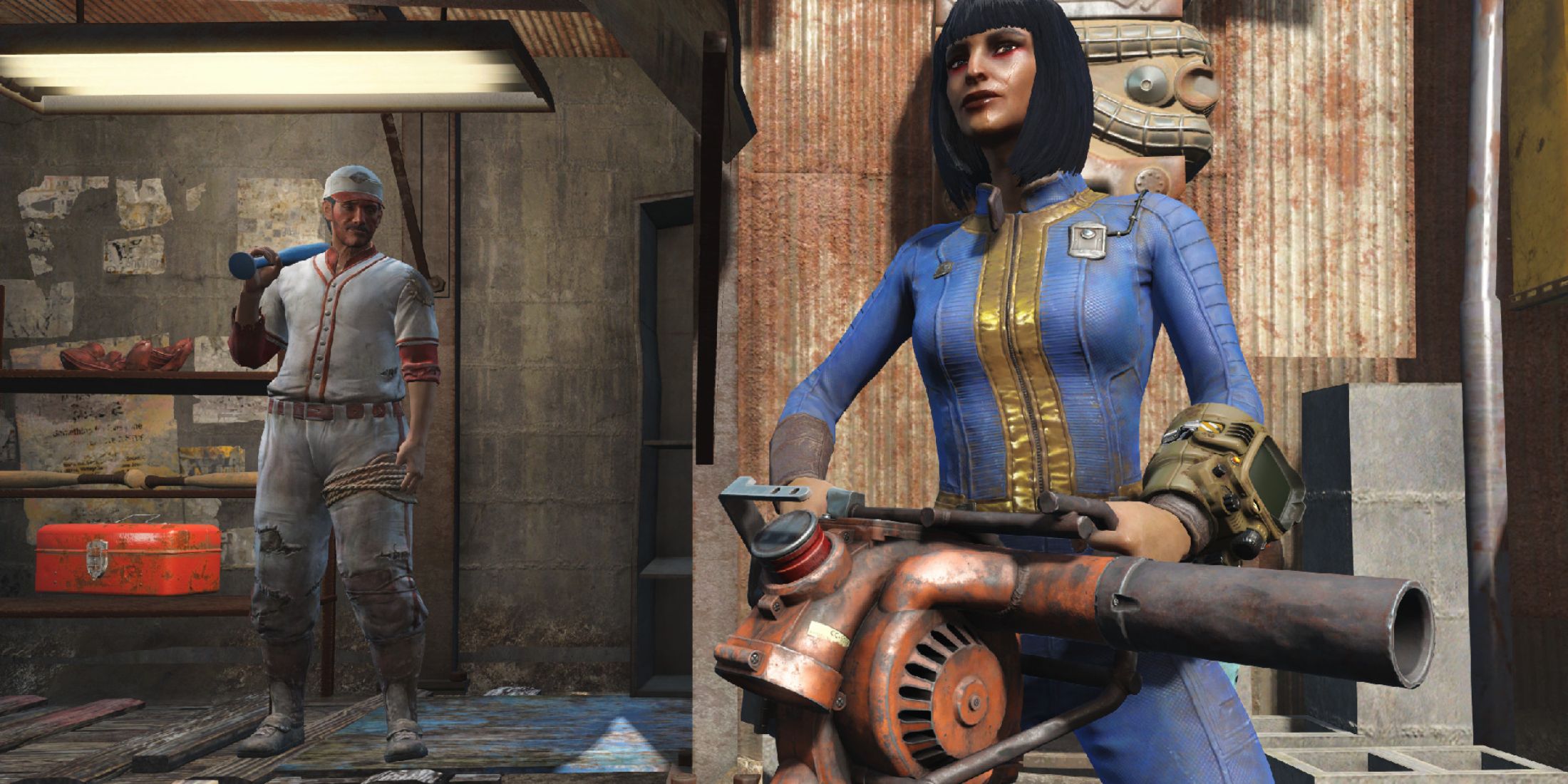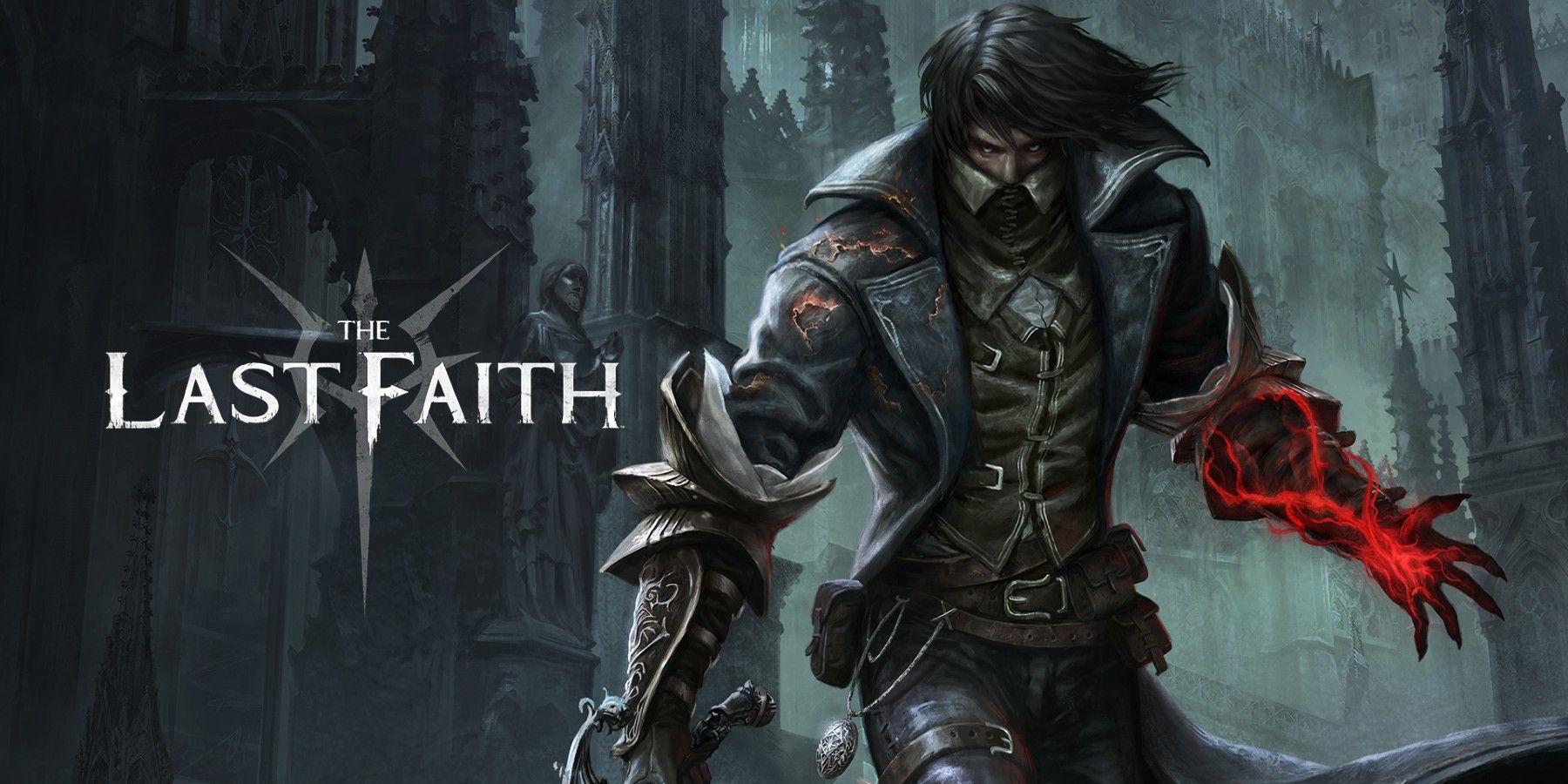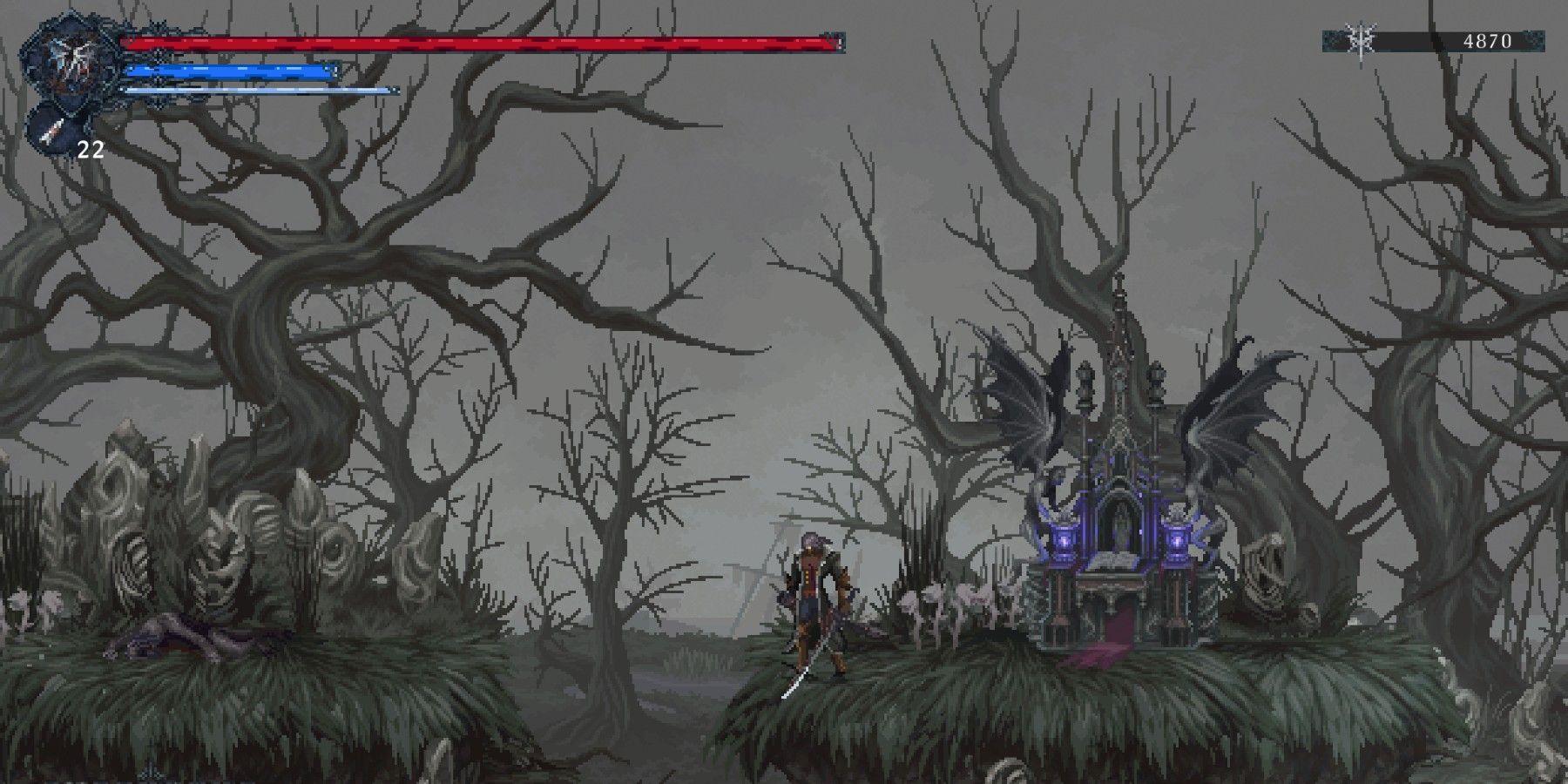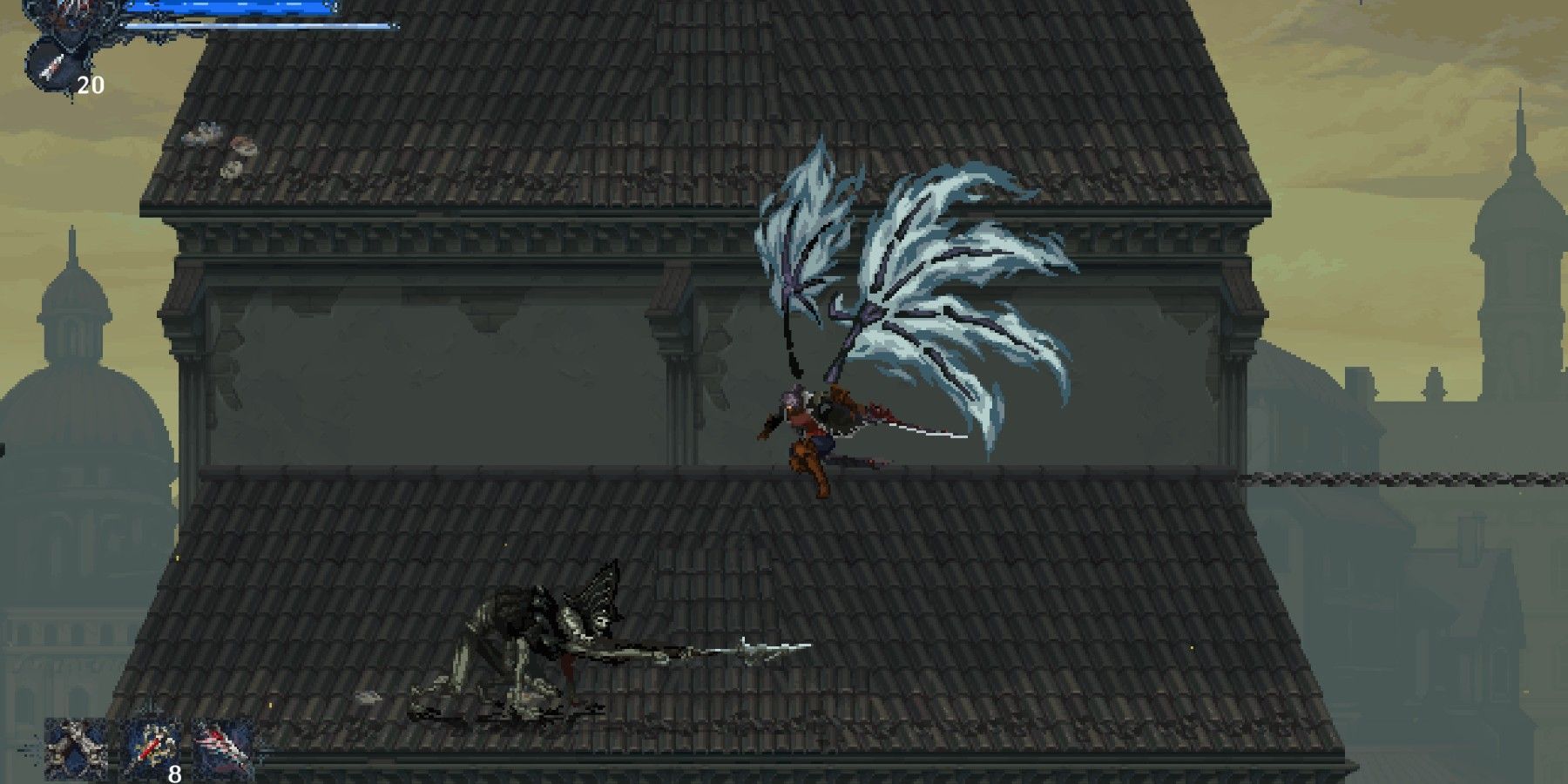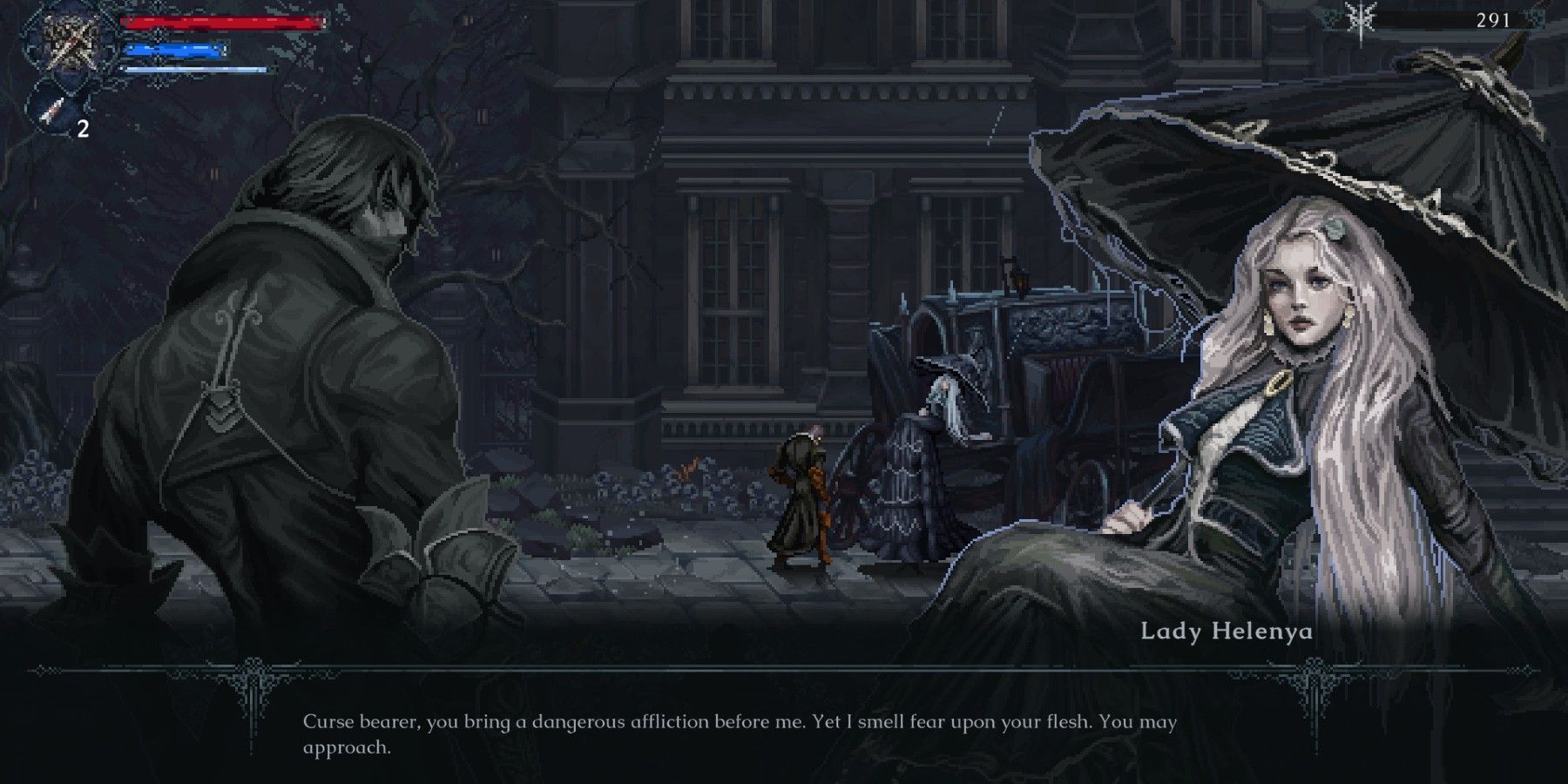2D action-adventure The Last Faith doesn't bring much new to the table, but what it does, it does well. It borrows liberally and unashamedly from its inspirations; part Castlevania, part Dark Souls, and a lot of Bloodborne. It takes so much, in fact, that it struggles to embody an identity of its own, and it's hard not to think that, in many ways, it's simply "2D Bloodborne." Yet wrapped up in all the gothic ambiance and nebulous dialogue lies the core of an excellent Metroidvania. A wide array of weapons and spells offer the right amount of diversity without becoming overwhelming; bosses are challenging; and the well-designed, interconnected levels yield their many secrets to thorough players.
Upon booting up a new game, players are given a choice between one of four combat styles. Combat styles in The Last Faith only determine starting stats and the character is fully customizable going forward. In this, The Last Faith stays true to the work that inspired it, yet shows the appropriate restraint when translating that into a tighter experience. Whereas Soulsborne games offer double those choices or more, Playstack had the wherewithal to reel that in and avoid throwing in unnecessary classes. The game gets that right throughout, understanding how much of the systems, stats, and menus it can effectively borrow from its progenitors while simplifying them. There are only five stats to level up (vitality, strength, dexterity, mind, instinct), menus and inventory are clear, and weapons follow a simple upgrade path to level 10 without any additional customization. Though that may sound limiting, it works perfectly well in this context.
In true Souls-like fashion, the impetus for hero Eryk's adventure is unclear, and remains that way for much of the adventure. With as much personality as a sack of potatoes, Eryk sets out to challenge a corrupt something-or-other and ostensibly rid the world of sickness. Though the game takes a lot of tonal queues from the rich story and lore of Bloodborne, The Last Faith isn't nearly as convoluted or expansive as its inspiration. The main narrative thrust is fairly simple, and it does eventually become clear, unlike the Soulsborne games, which can have a player still not understanding exactly what they did by the game's end.
Rather, it's the vague and referential writing that creates a false sense of opaqueness. Playstack seems to be trying to emulate Bloodborne by being obtuse and wordy, without quite grasping the "why" of that thematic choice. Item descriptions are full of nonsensical text, presumably aiming to create an air of mystery, or long-winded dialogue heavy with filler words only serves to bog things down and risk losing player focus. In fairness, this usually isn't too distracting, aside from a few choice examples. Much of the writing elsewhere is fine but feels a little ham-fisted. Fortunately, it doesn't take much away from the game as a whole.
Shortly after the opening, Eryk finds himself at Oxnyville Manor, a spooky, abandoned mansion, and the player's home base. It's the only place to upgrade weapons, buy spells, and level up in The Last Faith. Luckily, a fast travel system is available right from the start, so Oxnyville is easily accessible. As the map is explored, friendly NPCs can be invited back to the manor where they'll provide a service or simply hang out, waiting to be checked on to advance their quest. Without a log or journal, the objectives in The Last Faith are more "soft" quests, where players must remember something a character said and return when their item is found. Sometimes NPCs ask Eryk directly to look for something and sometimes it's hard to tell a quest is even in progress until the item is handed over and a Steam achievement pops. Luckily, these quests aren't too difficult, and the diligent player, busting every wall looking for secrets, will likely complete them as they progress.
Great rewards wait for those willing to smash every single nook and cranny, although Castlevania fans might be disappointed that not a single chicken hides behind those walls. Not only do special rewards lie in wait, but breaking false barriers is often necessary for advancement, so it's best to get in the habit of checking everywhere. Often, progression will require exploring a zone until a few switches or items are located, each one weakening a locked gate. This is repeated several times throughout the game, for both the primary path and secret areas. The system is fine, but by the end of the game, it gets tiring and feels like a contrived way to force exploration.
Aside from that foible, exploration and level design are solid, with nearby areas just out of reach, hinting at return trips with several unlockable traversal abilities like air dash, double jump, and wall stick. Taking a look back at the history of Metroidvainia games it's clear that Playstack isn't trying to re-invent the wheel, and as a result, The Last Faith tends to play it safe. Not just in regard to the navigation and traversal abilities, in fact, that sentiment can describe much of the game. Yet it's all done very well, with a clear grasp of the genre's fundamentals, creating a world that feels tight, crisp, and intentional.
Combat and boss encounters are a great example of that experience and competency. The occasional boss is a little underwhelming and there are a couple of re-skins, but many are tough as nails on the first attempt, only revealing their weaknesses and patterns when approached with patience and experimentation. It's often a good idea to try out different weapons or apply different consumables to find out what works best. Occasionally it may mean farming Nycrux, the game's currency, which is dropped by enemies and is used to purchase items, upgrades, and to level up. This isn't necessary too often, aside from earning a few bucks to buy healing items. Most often, even the toughest boss will fall when analyzed and the right tactics are applied.
Players can equip a total of four weapons/spells at once, two on the right hand and two on the left, switching between them at will. The right hand holds the primary attacker: axes, swords, a whip, a mace, etc. Each handles differently and each has a unique transformation ability, like a simplified version of the trick weapons in Bloodborne. Transformation abilities consume either Focus (magic points) or, occasionally, Demioxide Bullets, of which Eryk can only carry around a small handful. These bullets are primarily used in guns equipped in the left hand. These never felt very necessary or helpful, aside from the very rare exploding enemy who needed to be sniped at a distance. Magic, on the other hand, is much more useful and flashy. In lieu of guns, spells can also be equipped in the left slot, which can really mix up the combat and apply some brutal damage, especially if a player is leaning towards a Mind build.
The spells align with one of several types, like fire, ice, or dark, inflicting different damage and possibly exploiting weaknesses. The same types can be temporarily applied to a weapon by using consumable items, which can be helpful in boss fights. Spells and armaments have weapon scaling, increasing their power according to the player's stat investment. Both primary weapons and guns can be upgraded to level 10, which occasionally increases its damage scaling factor too. Spells, however, can not be upgraded.
Everything on display here has been seen before, and though it does those things well, its reliance on a tried-and-true formula and its liberal borrowing from Bloodborne in particular work against it, denying it a unique identity. Yet despite the impulse to think that The Last Faith could just be 2D Bloodborne 2, the final product is a great Metroidvania on its own, and - aside from some of the writing - its adaptation of the work that inspired it is very well done. Ultimately, The Last Faith feels sharp, looks great, and it's a lot of fun to play. Playstack clearly loves and understands the genre, and anyone looking to scratch the itch will certainly enjoy this game.
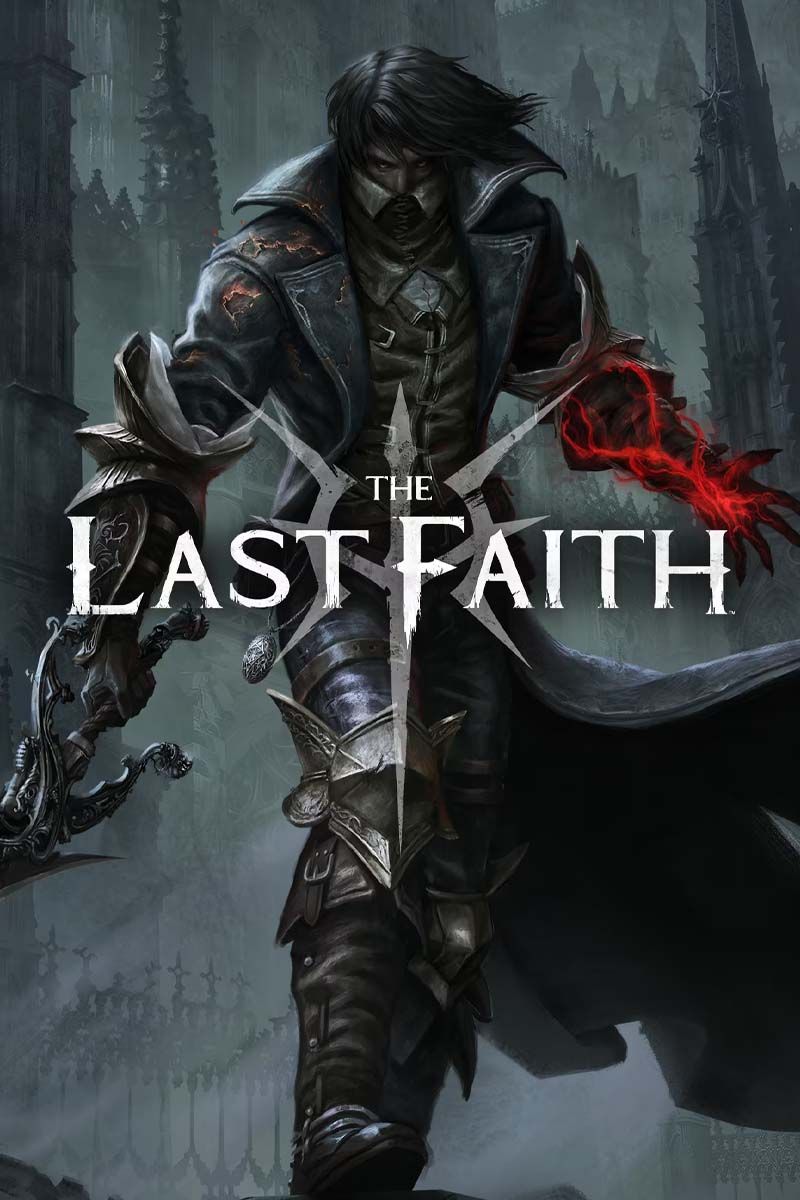
The Last Faith
A dark, gothic fusion of metroidvania and soulslike. The Last Faith thrives on merciless and precise combat with a huge range of weapons, firearms, and custom executions at your disposal. Let nothing stand in your way.
The Last Faith is available now on PC, PS4, PS5, Switch, Xbox Series X/S. Game ZXC was provided a PC code for this review.

